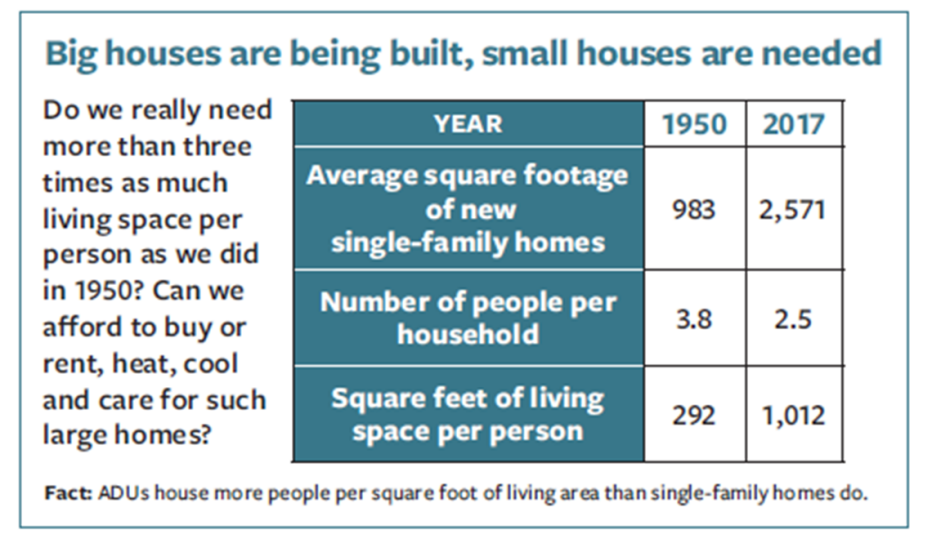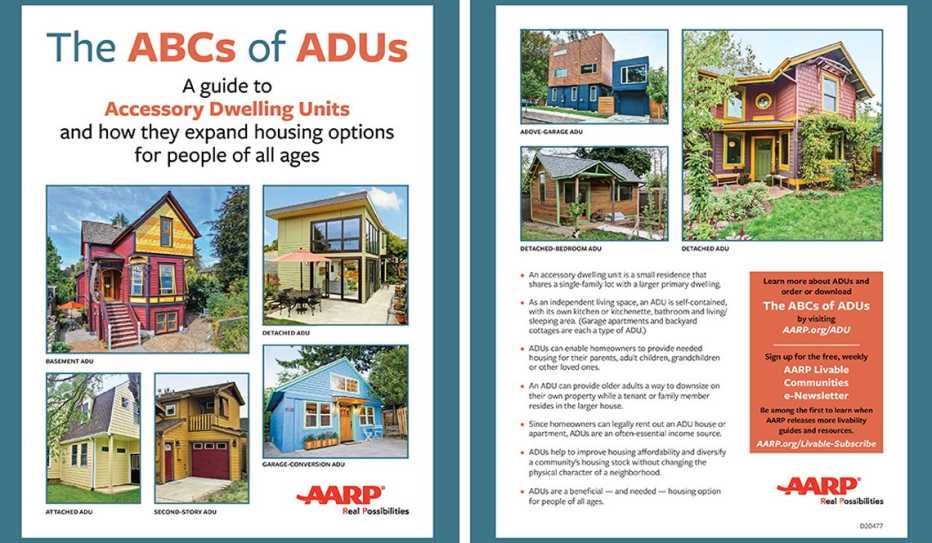AARP Hearing Center


ADUs are age-friendly
New-construction ADUs can be created with "universal design" features, such as a zero-step entrance and doorways, hallways and bathrooms that are accessible for people with mobility differences. Garage conversions are among the easiest and least expensive ADU solutions for aging in place since they're preexisting structures and genrally have no-step entries.
Learn more about making a home aging-friendly by ordering or downloading the AARP HomeFit Guide.
ADUs are an affordable housing option
- ADUs can generate rental income to help homeowners cover mortgage payments or simply make ends meet. The income provided by an ADU tenant can be especially important for older people on fixed incomes.
- Since the land on which an ADU is built already belongs to the homeowner, the expense to build a secondary residence is for the new structure only. The lot is, in a sense, free.
- ADUs are typically owned and managed by homeowners who live on the premises. Such landlords are less likely to raise the rent once a valued tenant has moved in. Many ADUs are created for family members to reside in for free or at a discounted rate.
- Although market-rate rents for ADUs tend to be slightly more than for similarly sized apartments, they often represent the only affordable rental choices in single-family neighborhoods, which typically contain no studio or one-bedroom housing options at all.
- Some municipalities are boosting ADUs as part of affordable housing and anti-displacement strategies. Santa Cruz, California (see Home Visit #1: Attached ADU Addition), is among the cities with programs to help lower-income households build ADUs or reside in them at reliably affordable rents.
ADUs are able to house people of all ages
- An individual’s housing needs change over time, and an ADU’s use can be adapted for different household types, income levels, employment situations and stages of life.
- ADUs offer young people entry-level housing choices.
- ADUs enable families to expand beyond their primary home.
- ADUs provide empty nesters and others with the option of moving into a smaller space while renting out their larger house or letting an adult child and his or her family reside in it.
ADUs are just the right size
- Generally measuring between 600 and 1,000 square feet, ADUs work well for the one and two-bedroom homes needed by today’s smaller, childless households, which now account for nearly two-thirds of all households in the United States.
ADUs are good for the environment
- ADUs require fewer resources to build and maintain than full-sized homes.
- ADUs use significantly less energy for heating and cooling. (Of all the ADU types, internal ones tend to have the lowest building and operating costs.)
ADUs are community compatible
- ADUs offer a way to include smaller, relatively affordable homes in established neighborhoods with minimal visual impact and without adding to an area’s sprawl.
- ADUs provide a more dispersed and incremental way of adding homes to a neighborhood than other options, such as multistory apartment buildings. As a result, it’s often easier to get community support for ADUs than for other housing types.
This article is adapted from The ABCs of ADUs, a publication by AARP Livable Communities. Learn more below.
MORE ABOUT ACCESSORY DWELLING UNITS
Visit AARP.org/ADU for links to more articles and to order AARP's free publications about accessory dwelling units.



































































